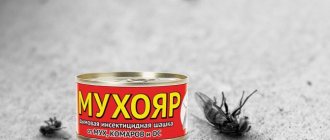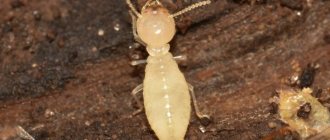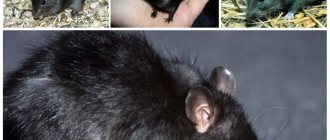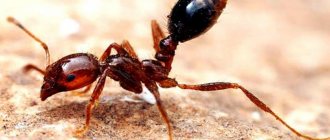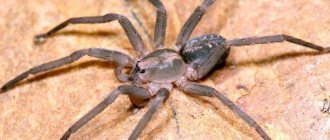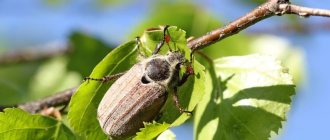The story of how bedbugs move is rarely complete without legends and outright fantasies. Meeting them makes a person want to move to a safe distance. Insects of the suborder Hemiptera (Hemiptera) do not pose any threat. They can swim, fly, jump and run. Domestic bed bloodsuckers only crawl, their movement speed is low.
House bugs move only with the help of their legs.
General information about bedbugs
Some types of parasites differ from each other in the following ways:
- lifestyle;
- nutritional characteristics;
- appearance.
Representatives of hemiptera have the same structure of the oral cavity. Some species feed on plant sap or human blood.
Parasites have a distinctive feature - they emit an unpleasant odor, which is formed as a result of the functioning of special glands located on the belly of the bug between the first and second pair of limbs. The aroma of the secreted liquid repels other insects.
The garden is inhabited by soldier bugs that destroy pests. Representatives of the Podisus species feed on Colorado potato beetles, and the turtle bug damages seedlings and young trees. Many species of the suborder Hemiptera consume the blood of animals, birds, bats, and humans. The clothing bug belongs to them.
Features of domestic bloodsuckers
An insect that lives in bed or linen cannot exist in an environment other than human habitation. Bed bugs have a size of no more than 8 mm, a flattened abdomen, which slightly expands on the sides.
Domestic bugs have defective wings; their capabilities are not enough to fly.
During its development, the bloodsucker goes through a stage of incomplete transformation. Nymphs hatch from eggs; the larvae are much smaller than the mother and do not have wings.
Linen parasites crawl along walls and ceilings in search of food, using a small proboscis to pierce human skin. Representatives of the order Hemiptera feed at night, being particularly active at 4-5 am.
Insects have a good sense of smell and identify food sources by smell.
The bug quickly finds small capillary vessels, pierces the skin, injecting an anesthetic composition.
Having drunk blood, it moves along the surface of the body 2-3 cm and bites the person again, continuing the process of saturation.
Domestic bugs photo, description, larva, eggs
On the global Internet you can find many photographs of domestic bedbugs. Their introducing species undergoes changes as they grow and molt, but in general the insect is similar at all stages of development. An adult house bug has a flat, oval-shaped body in a hungry state; as it becomes saturated with blood, it becomes convex and elongated. The color of the insect also depends on whether the bug is hungry or well-fed. It can vary from light brown, almost transparent, to dark brown and almost black. An adult house bug reaches 7 mm in length and 3 mm in width.
Main reasons for migration
The movement of blood-sucking insects is a forced or natural process.
Parasites enter an apartment in the following ways:
- on the clothes and shoes of family members;
- when purchasing contaminated furniture or items;
- on pet fur.
Migration of bedbugs occurs during renovation of premises or during the period of disinfestation measures. Relocation of bedding species is carried out in the dark. Only during disinfestation do insects migrate during the day. The movement of blood-sucking individuals can also occur along the external walls of multi-story buildings.
The main reason for the movement of bedbugs is hunger, which threatens their existence. The migration of laundry parasites from neighbors is a common process in a multi-story building.
How do insects move?
Domestic bloodsuckers do not run very fast; they are only able to crawl from their shelter to the location of the victim, moving slowly with the help of 3 pairs of limbs.
In the early morning or during the daytime, it is difficult to notice insects, because they make only short dashes. Linen bugs are unable to jump and fly due to the lack of wings. The inability to move quickly affects their lifestyle: for most of the day they hide in crevices, which they leave when they are hungry.
During daylight hours, bedbugs in the apartment hide in cracks.
Moving slowly, bedbugs crawl to the sofa or bed and attack a sleeping person.
From one apartment to another
Insects can penetrate from an infected home into a clean apartment, hiding in the folds of outer clothing. Sometimes guests whose home is infested with parasites bring the pests into the house of their friends or acquaintances.
Bloodsuckers can be introduced by purchasing old furniture or used items from owners whose home is a habitat for pests.
Bedbugs can enter an apartment by settling on the back panel of the sofa, hiding in small holes or cracks.
In favorable home conditions, an adult female leaves up to 6 clutches daily. Young parasites are capable of mating a month after hatching from the eggs.
Around the house
Having penetrated into a living space, bedbugs can quickly spread throughout the apartment if a person discovers their shelter and violates its integrity. In the first days, no one notices the blood-sucking individuals; they rarely crawl within sight. After 1-2 weeks there are more of them, they migrate between rooms in search of food. Insects do not form nests; if their peace is disturbed, they crawl around the apartment in search of a new shelter.
Features of insect life
A bedbug is an arthropod, a blood-sucking insect. Body size varies from 3 to 8.5 mm. The more the bloodsucker feeds, the larger it becomes. The human bed is its favorite habitat, for which it received the name “bed”. The body shape is wide and flattened, making it difficult to crush the insect and it moves easily in tissue folds. Features of life:
- Female and male individuals, as well as bedbug larvae, feed on human blood and are nocturnal, attacking from 3 a.m. to 8 a.m.
- In the morning they hide in clothes, a mattress, climb into books, under wallpaper and baseboards. When they are very hungry, they go hunting during the day, but this happens extremely rarely.
- Parasites run fast. One adult is capable of covering 1 meter in 1 minute. They make their way into neighboring rooms along the walls or through ventilation systems.
- They find shelter and prey using their sense of smell, which is well developed. They prefer to hide in dressing gowns and other clothes that the victim most often wears.
- Bed bugs feed once every 7 days. In this case, the larva drinks 1 mg of blood in one bite, an adult – 7 mg. In addition to humans, parasites are capable of attacking domestic animals and birds.
- Fertilization of the female occurs through traumatic insemination. To introduce the seed, the male pierces the female's abdomen with the genital organ. After 2 weeks, she begins to lay 5 eggs daily. Over a lifetime, up to 500 pieces are produced.
- A month later, a larva emerges from the egg. If the conditions for development are unsuitable, the birth process is delayed up to 3 months. For further growth, the larva requires food, in search of which it sets out immediately after birth.
- After 30 days, new individuals will be able to reproduce, so the colony of insects quickly grows, capturing new places.
- Bedbugs cannot fly because they do not have developed wings. They can't jump either.
Bedbug saliva contains painkillers, so their bites are painless. Parasites do not tolerate infectious diseases, so they are considered not dangerous to humans. Those who are prone to allergies should be wary. The bite sites swell, then itchy blisters appear.
Pest running speed
Bedbugs move at a speed of 1 m per minute. Small larvae move more slowly, so they live near human sleeping places so as not to move long distances at night.
House bugs move exclusively in one way - crawling from place to place.
During the migration period, domestic parasites travel long distances. In 24 hours, moving through a ventilation shaft, bedbugs crawl several hundred meters.
Domestic bloodsuckers move slower than cockroaches. Predatory bugs of the Antacoris species, living in tropical countries, move faster than linen bugs and attack sedentary insects - mollusks, caterpillars, larvae.
How bedbugs are transmitted by people themselves
A person can bring domestic parasites into an apartment on outer clothing. Having entered the room, insects take up residence in wardrobes. Favorable conditions for the reproduction of bedbugs in the folds of clothing are a temperature of +25°C and high humidity. If the owner purchased old furniture, he may infest the house with blood-sucking insects and discover them several months later.
Soft toys and old books brought into the apartment may be infested with bedbugs. Sometimes pests enter the home via packages that have been stored in unsanitary conditions in a contaminated warehouse.
While staying at a hotel or inn, a person does not notice that parasites have entered his luggage and brings them into his apartment.
Where do bed bugs come from in an apartment?
- Bed bugs move from one room to another using clothing. For example, you have guests who, in turn, live in bedbug-infested apartments, and bring you blood-sucking parasites with their clothes. Bedbugs, especially in the warm season, happily climb into all sorts of things; as soon as this person comes to a new facility, bedbugs quickly populate new territories.
- Let’s say you send them into a room where there are bedbugs, stay there for a few minutes, and in just a few minutes they manage to get into your clothes, and you bring them home. It’s even worse if they took clothes that were stored in contaminated places and brought them home.
- For example, you bought used furniture, sofas, mattresses, cabinets, bedside tables, beds, from rooms infested with bedbugs, and these guests populate your home.
- Another option, you gave a lift in your car to a person with bedbugs in his pockets, the bloodsuckers crawl out, stay in the car for some time, choose a convenient moment, climb into your clothes, and then into your apartment.
- Much less often, unlike cockroaches, bedbugs move from neighbors; they are very reluctant to use air vents.
- Well, in the rarest case, you went somewhere on vacation and brought bedbugs to your home from the hotel where you stayed.
There is one peculiarity: BUGS love private houses a little more (the exact opposite of cockroaches). In rural areas there are much more infested houses than apartments in cities.
And, of course, if you fight them, you won’t have bedbugs.
The possibility of insects appearing in the house due to exterminators
Chemical treatment of the premises forces parasites to leave their habitat. Individuals that did not die during disinfestation crawl into neighboring apartments located in multi-story buildings. Bed bugs do not leave their habitat if disinfestation was carried out unprofessionally, or during work they used drugs to which the pests have become resistant.
The survivors after disinfestation begin to seek shelter in other apartments.
Blood-sucking insects can re-enter the room after chemical treatment if there were too many of them and the poison did not reach the hiding places of the individuals.
Common Myths
Many people feel fear at the mere mention of blood-sucking parasites and willingly believe various stories about bed bugs.
The following are popular among them:
- Household parasites carry dangerous diseases. This statement is not true. A person who is constantly bitten by bedbugs develops symptoms: itching at the site of the skin puncture, insomnia, allergic reactions on the skin. Parasite bites negatively affect the state of the nervous system, symptoms of depression often develop, a person feels anxiety, and panic seizes him. Scientists have found that domestic bloodsuckers are not carriers of dangerous diseases.
- The small size of insects makes them difficult to detect with the naked eye. This is an incorrect statement, because a person with normal vision can see the parasite. The body of the bug is slightly flattened, but after eating it increases in size, then the insect is easy to notice in the bed or behind the carpet.
- Linen specimens live only in beds. An erroneous statement, because Parasites are found not only in the folds of bedding, they live in curtains, the seams of chairs and under the upholstery of the sofa.
Bed bugs fly and jump
Bed parasites only move slowly over short distances, but are unable to fly or jump. A hungry insect covers a distance of 30 cm in 60 seconds. Having eaten, the bug becomes less mobile, because his body increases in size several times.
The size of a well-fed bug increases significantly, it becomes more noticeable and inactive.
The pest crawls a short distance 2.5 times slower.
There is a myth among owners of comfortable apartments and country houses that a blood-sucking insect can jump and fly. The reason for the misconceptions is related to the behavior of other representatives belonging to the order Hemiptera. Among them there are individuals that make jumps and can fly in air currents over long distances.
The house bug has a special body structure. 6 small limbs do not allow the insect to make even short jumps. The wings, which fit tightly to the upper part of the body, are in their infancy. They can only be seen upon closer inspection.
When studying information about bedbugs, it becomes clear that blood-sucking parasites can move around the apartment only by crawling from one place to another.
Can a bug live permanently on a person?
Bed bugs are capable of biting people, but are not able to live on humans. Human body temperature is not suitable for these ectoparasites. For their life activity and reproduction, a temperature range of +20...300C is required. However, parasites can travel long distances in luggage, backpacks and other objects that are not adjacent to the human body.
Bed bugs' feet are also not designed to hold the parasite on people's skin. They crawl onto a person when he sleeps and does not move. This gives them the opportunity to freely drink blood while the victim is not active. After this, the parasite tries to quickly leave the human body and hide in a secluded place.
Interesting Facts
Residents of apartment buildings should know some signs of the presence of linen bloodsuckers indoors:
- The bug has an odor reminiscent of coriander.
- An indisputable sign of the presence of insects is complaints from family members about the appearance of numerous bites located on the body.
- Peak food intake for parasites is from 0:00 to 05:00 hours.
- An insect that feeds on blood can go without food for 2 months.
- An adult quickly finds a food source, because senses the warmth of the human body and the presence of carbon dioxide in the exhaled air.
- A bug bite causes an allergic reaction in 80% of people.
- The insect is often the cause of anemia in young children.
- Triatomidae are carriers of the causative agent of Chagas disease or American trypanosomiasis.
- An increase in the number of blood-sucking parasites is facilitated by the formation of populations resistant to the effects of insecticides, for example, 25% of cypermethrin, which is part of disinfectants.
There are many ways to combat home bugs, which allow you to destroy all blood-sucking insects living in the room.
Source
